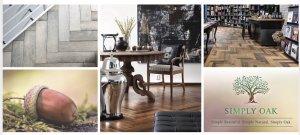The earliest examples of the Herringbone pattern can be seen in the intricate jewelry of the Ancient Egyptian elite and in fabric originating in Ancient Italy. In the Roman Empire the Herringbone pattern got its start when city architects in Rome realized that pointing road bricks in the same direction as foot traffic lent the roads more stability.
Named after its resemblance to the skeleton of a herring fish, the Herringbone pattern consists of an arrangement of rectangles or parallelograms in a repetitive pattern, based on the symmetries in the pattern (known as a wallpaper group). In simpler terms, it is a distinctive “V” shape. It started to become popular as a flooring in Europe as early as the 1500’s when it started out as brickwork. It was also known for people to scatter sand on their dirt floors and sweep the floor in a decorative pattern.
One of the first examples of wood herringbone can be found in the Francois 1 Gallery at the Chateau de Fontainebleau, which was installed in 1539.
It was designed and produced by Italian craftsman whom Francois had hired away from Italy and immediately started a fashion in patterned wood flooring. From the seventeenth century to the latter half of the eighteenth century, the popularity of parquet floors reached a fevered pitch. Patterned wood floors were laid in castles, palaces and the homes of the nobility and wealthy throughout Western Europe.
Please contact us to inquire how our talented team at Simply Oak™ can support you on your next project, whether that be for Herringbone, Chevron, Parquet or Plank orientation.
SIMPLY BEAUTIFUL. SIMPLY NATURAL. SIMPLY OAK.

